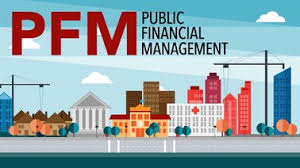For you to be reading this article, you must be curious about how APR works on credit cards. I’m sure you’d like to know how it works. When it comes to a credit card, the APR most often appears when you carry a balance, but you must note that other transactions, e.g., cash advances and late payments are also prone to APRs, which might be more than your normal tax.
Individuals who own credit cards should know how APRs work when an Annual Percentage Rate might be applied, and how practicing good financial methods can help you avoid it.
Well, I’m sure you are impatient to have an answer to the question on your mind (how does APR work on credit cards)? I’ve got you covered on that; without boring you too much, allow me to dive right into the purpose of this article.
How Does Credit Card APR Work?
Your traditional credit card purchase APR is set by the issuer once you have been authorized for a new credit card. This is the dividend/interest rate you will be charged for borrowing funds, which is broken down into a daily rate.
It’s very possible to evade interest charges totally if you can pay back what you owe by the statement due date or within the card’s grace period.
Whether you pay a fraction or a percentage of the balance or take a cash advance, interest is calculated and added to the amount owed.
How Do I Calculate My Monthly Credit Card APR?
Credit card APR naturally pertains to the interest applied to your account during a specific billing process. The formula for how an APR is calculated for credit cards is:
[daily rate] x [average daily balance] x [days in billing cycle] = “credit card interest”#1. Change your APR To A Daily rate
You should calculate this by numbering your credit card’s purchase annual % rate by 365 (which is the number of days in a year). For instance, if your Annual Percentage Rate is 18%, your daily rate is .00049 percent.
#2. Calculate Your Average daily balance
Add up your total at the end of each day in the billing cycle and divide the amount by the number of days in the billing cycle. This is your average daily balance.
Days In The Billing Cycle
To get the daily rate, you must multiply by your average daily balance, and that sum is multiplied by the number of days in the billing cycle. With most issuers, the interest increases daily.
Is APR Charged Monthly?
The APR on a credit card is an annualized amount rate that is applied monthly. If the initial APR on a credit card is 19%, for instance, then an interest rate of 1.5 percent on the outstanding balance will be included monthly in the overall amount owed.
If you fall under the category that pays the balance in full no later than the given time between the end of a billing cycle and the duration when your payment is due, (this is often referred to as the grace period) then you can evade paying interest on any purchases that you’ve made.
How Do I Avoid APR On My Credit Card?
Now that you know how APR credit cards work, it’s only natural that you’d want to know how to avoid interest. A credit card debt is expensive, and since you can keep spending with your card even if you owe money, your debt can grow quickly.
According to a 2021 NerdWallet survey, U.S. homes with spiraling credit card debt spend an average of approx $1,000 in interest per year.
Most times, you are forced to take on debt if you find yourself in a fix or dealing with an unexpected expense.
Sometimes you need to cover the bills while you’re out of a job. In these circumstances, you must find ways to either reduce credit or avoid it. The interest you pay can help you save money.
Nevertheless, the most effective way to save funds on credit card interest is to avoid it entirely. Some of the ways you can avoid credit on APR include:
#1. Reduce debt with a balance transfer credit card
If you presently have credit card debt, shifting it over to a balance transfer credit card will provide you with a long time to clear up your debt at 0% interest — normally a year or it could be more than a year. This can save you a sufficient and vast amount of funds.
There are some key factors to know about balance transfer credit cards, however:
- You generally require sufficient or great credit to qualify for these kinds of cards. That means FICO totals of 690 or more.
- A Lot of these cards demand a balance transfer tariff of roughly 3% to 5% of the transferred balance. There are a fixed and particular number of no-fee options accessible.
- The interest percentage will increase after the 0% APR promotion expires. If you are yet to fully pay off your outstanding balance by then, you’ll start to owe interest on the lingering amount.
#2. Spend wisely
If you intend to buy something expensive shortly that you’ll pay off over a long period, you have alternatives beyond taking on credit card debt.
But your budget must be foremost on your mind when choosing ways to fund a large expense. You could be subjected to fees for missed payments or interest on remaining debt when the promotion period expires.
You must find a credit card that charges 0% APR on new purchases. This can provide you with a year or more to make payments without incurring debt. You’ll make payments on any lingering balance at the end of the 0% APR offer, though.
You must contemplate deferred interest financing. Some shopping cards or medical credit cards give this category of financing; it can be helpful, but it comes with a price as it’s not free.
If you don’t offset your balance in full by the end of the grace period, you’ll owe interest on the whole amount you initially borrowed, not just on the outstanding balance.
You should go for the buy now, pay later plan. These plans permit you to split large purchases into a series of minor payments.
You can pay in installments. You might pay interest or a fee, and may also have to pay late fees if you miss a payment.
#3. Offset all bill in full every month
A lot of credit cards give a grace period/promotional period, which lasts at least 21 days counting from your monthly statement date.
At this time, you should pay your full balance without incurring interest on your purchases.
You must bear in mind, though, that if you move even a small fee from one month to the next, you’ll lose your grace period on new purchases.
That’s to say they’ll start accruing interest instantly until you offset all outstanding debt.
#4. Consider using a debit card or cash
If you have an addiction to spending too much, compulsive buying, and want to avoid the temptation, you must master the habit of always using a, it would serve you best debit card or cash to make your transactions.
Prepaid debit cards discourage you from spending more than the cash in your account. Several banks will issue a debit card in line with your checking account.
Furthermore, some secured credit cards don’t need a credit check, need a security deposit to act as your credit limit, and help you build credit.
They are like debit cards with subtle tweaks, and maybe a good in-between solution. If you fail to make a payment, some secured credit cards will debit the balance right out of your security deposit, preventing you from unnecessary expenses.
#5. Know how much interest it’s amounting to
Your Annual Percentage Rate (APR) might be confusing. You must first confirm you know how much interest you will offset on the card balance you hold.
Once you are aware of the true cost of interest, you can create a strategy to pay off your balance. If you now have a $0 balance, you must know how much interest adds to your bill. This will motivate you to stay within budget.
#6. Use a debt repayment method
Facing debt head-on can be scary and depressing, particularly if you’re paying off many balances all at once.
But there are strategies you can employ to stay afloat, coordinated, and motivated. One method, the debt avalanche, can help.
Debt avalanche allows you to start by listing all of your debts in order of interest rate, from highest to lowest.
Then, make the minor payment on outstanding debt, while applying more money in your budget to the debt at the top of the list.
Immediately you offset that debt and start paying the debt with the second-highest interest rate. As you cancel each debt off your list, prioritize the highest debts.
#7. Save to pay off debts
To face unforeseen circumstances, it’s fundamental to have savings set aside. Once you’ve saved up an amount that serves as a safety blanket through a crisis, you can begin putting more savings to work by paying down debt.
Conclusions
If you follow these few explanations highlighted in this article you should have an idea of how APR on credit cards work.
You must study the terms and conditions for your card to confirm your credit provider delivers a grace period/promotional period. If it’s not available, shop around for another card.
- IS SILVER A GOOD INVESTMENT IN 2023: Perks and Risks Explained
- TOP 11+ PRODUCT ANALYTICS TOOLS IN 2023
- NETWORK MARKETING: Definition & How Does It Works
- How Do Bonds Work As Investment 2023 & All You Need to Know






